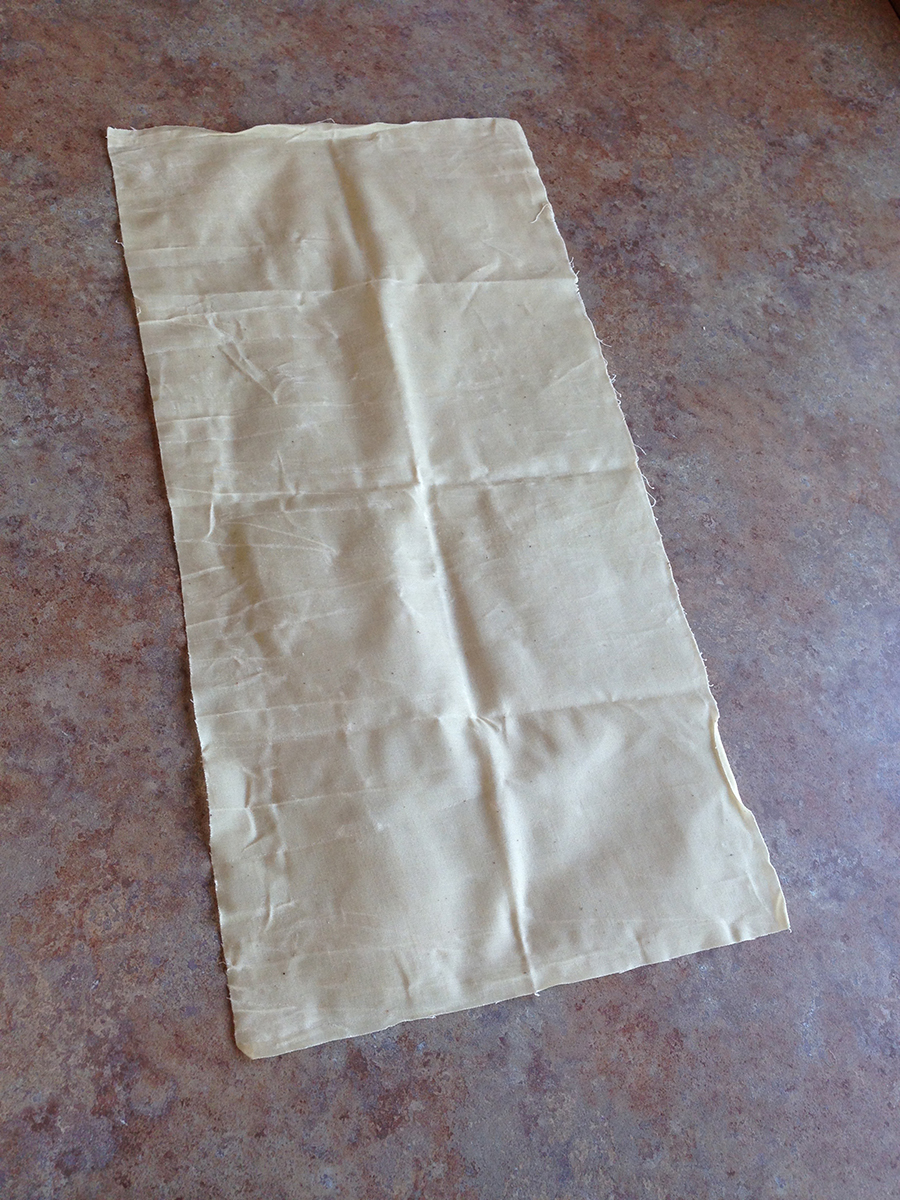My quest for better art reference has brought me to a new material with properties that would make any illustrator giddy. The material in question is waxed cotton, something I am sure has been around long before its popularity as an alternative to plastic wrap.
The amazing thing about waxed cotton is its ability to adhere to itself, stick to other surfaces, and remain rigid from the beeswax coating. All of these factors play a role in making the fabric sculptable.
The kind I ordered is uncolored, but not pure white, making it perfect for photographic reference. Waxed cotton is also available in patterns and bright colors for those who would like to use it for doll clothing projects. Scrap pieces you want to save condense well and stay put for easy storage.
Here are some more examples of the properties of waxed cotton. I find that you can get great results from pressing the fabric until it sticks to the maquette where you would see the fabric naturally rest. You can then pull the end of the drape to encourage folds that would be caused by gravity or wind. The weight of the waxed cotton does not allow for really long pieces of unsupported cotton, but you can push it! Twisting and pulling the fabric just the right way will allow for some impressive undulations.
The cotton fabric does a lot of the work by itself, but understanding the how folds should look in real life helps with the fine tuning.
Depending on the complexity of your character's clothing, sewing experience is not required. You can build clothing onto your maquette because it sticks so well. The hood I made for my female maquette is just one rectangular strip of waxed cotton that I have wrapped around her head.
As an overview, here are the pros and cons of working with waxed cotton:
Cons
- Heaviness prevents posing of long drapery
- Leaves waxy residue on skin (much like Sculpey clay, but easier to clean off)
- Stickiness makes sewn clothing hard to put on maquette
- Difficult to draw on for cutting patterns
- Some fraying occurs at edge of cut cloth
- Smells terrible (if you don't like the smell of beeswax)
Pros
- Sculptable for a variety of cloth posing
- A suitable fold thickness for being realistic at a small scale
- No-sew options for most clothing types
- Affordable price
- Reusable by washing with soap in cold water
- Easy to compact for storage
- Easy to cut
- Translucent quality great for backlit lighting schemes
- Slight transparency helpful for viewing anatomy
- Slight elasticity for more flexible maquette posing
- Smells amazing (if you like the smell of beeswax)
There are a few more techniques for achieving sculptable clothing including:
- the cotton-gesso technique
- glue application
Gone are the days of tape-covered foil! Actually, that stuff worked pretty well when I needed it. Happy reference gathering!











